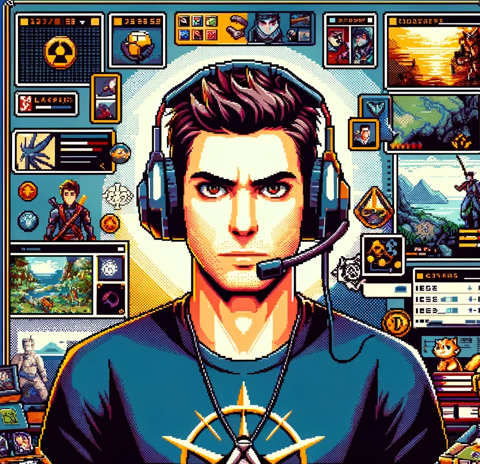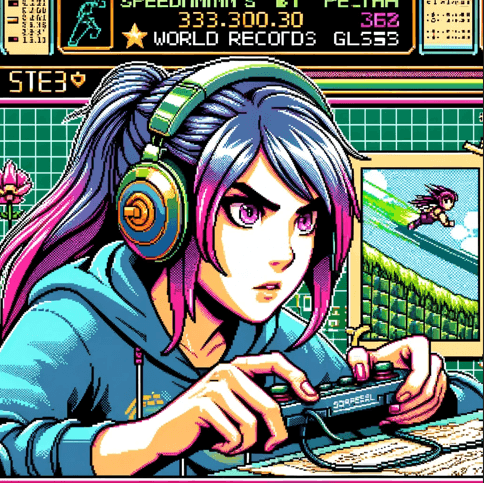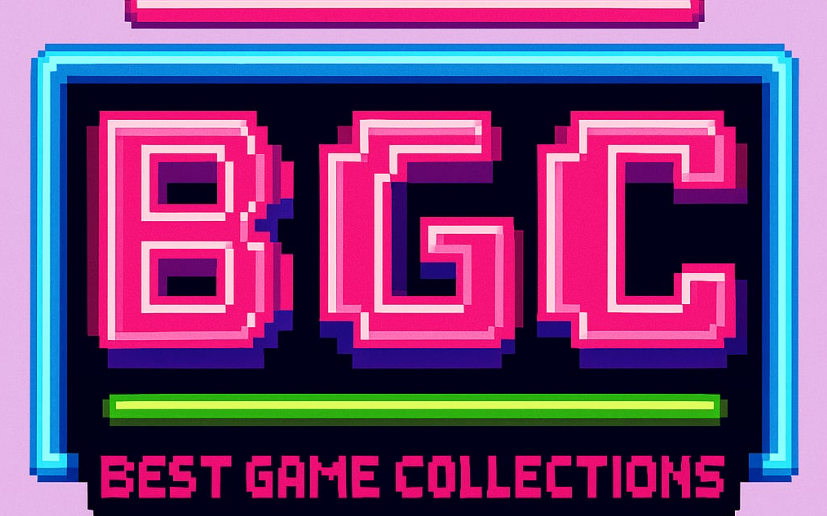 I love how The Binding of Isaac: Rebirth by Nicalis, Inc. shows its strength in creative gameplay. Additionally, I appreciate the innovative item interactions that allow for unique builds. Furthermore, the game challenges us with precise controls and deep mechanics in a rogue-like shooter. Interestingly, I note that some critiques about its unpredictable difficulty actually add tactical depth. Moreover, I value the intricate character development and the detailed combat strategy that hardcore gamers like me embrace.
I love how The Binding of Isaac: Rebirth by Nicalis, Inc. shows its strength in creative gameplay. Additionally, I appreciate the innovative item interactions that allow for unique builds. Furthermore, the game challenges us with precise controls and deep mechanics in a rogue-like shooter. Interestingly, I note that some critiques about its unpredictable difficulty actually add tactical depth. Moreover, I value the intricate character development and the detailed combat strategy that hardcore gamers like me embrace.
 In addition, I must note that the developers at Nicalis, Inc. meticulously crafted every nook and cranny of Rebirth to deliver an immersive experience. Beyond the base game’s 550+ items, expansions like Afterbirth (2015), Afterbirth+ (2017), and Repentance (2021) have pushed the total item count to over 1,000, alongside dozens of new enemies and bosses. Additionally, I enjoyed hunting down every secret and achievement—whether unlocking The Lost or conquering Greed Mode. Furthermore, the hand‑drawn pixel art, superb animated effects, and even the tongue‑in‑cheek “poop physics” highlight both the game’s polished presentation and its offbeat humor, which reviewers often praise as bold design choices rather than mere quirks.
In addition, I must note that the developers at Nicalis, Inc. meticulously crafted every nook and cranny of Rebirth to deliver an immersive experience. Beyond the base game’s 550+ items, expansions like Afterbirth (2015), Afterbirth+ (2017), and Repentance (2021) have pushed the total item count to over 1,000, alongside dozens of new enemies and bosses. Additionally, I enjoyed hunting down every secret and achievement—whether unlocking The Lost or conquering Greed Mode. Furthermore, the hand‑drawn pixel art, superb animated effects, and even the tongue‑in‑cheek “poop physics” highlight both the game’s polished presentation and its offbeat humor, which reviewers often praise as bold design choices rather than mere quirks.
 Indeed, developer and publisher Nicalis, Inc. have given us a game that stands out in the rogue-like genre. Consequently, I love the thrill of uncovering bizarre treasures and exploring secret rooms. While one review humorously criticizes the game’s offbeat style, I see it as a bold artistic choice. Moreover, the dynamic world and unpredictable encounters keep me on my toes during every run.
Indeed, developer and publisher Nicalis, Inc. have given us a game that stands out in the rogue-like genre. Consequently, I love the thrill of uncovering bizarre treasures and exploring secret rooms. While one review humorously criticizes the game’s offbeat style, I see it as a bold artistic choice. Moreover, the dynamic world and unpredictable encounters keep me on my toes during every run.
 I agree with everyone on the value of this game. I focus on how the game’s mechanics allow me to optimize my runs. The controls feel smooth, and the analog directional movement helps me cut precious seconds. The fast-paced action and intricate level designs push speedrunning techniques to a new level. I find that mastering the game engine’s 60fps performance boosts my skills on each playthrough.
I agree with everyone on the value of this game. I focus on how the game’s mechanics allow me to optimize my runs. The controls feel smooth, and the analog directional movement helps me cut precious seconds. The fast-paced action and intricate level designs push speedrunning techniques to a new level. I find that mastering the game engine’s 60fps performance boosts my skills on each playthrough.
 Let’s dive deeper into gameplay mechanics. Rebirth’s creative item usage—for instance, combining Brimstone with Tampering—dramatically alters Isaac’s abilities. Environmental interactivity, such as bomb‑triggered rock formations or fire‑trail propagation, gives savvy players a tactical edge. In comparison to competitive titles, its mechanics are deceptively simple yet infinitely deep, rewarding both casual experimentation and strategic optimization.
Let’s dive deeper into gameplay mechanics. Rebirth’s creative item usage—for instance, combining Brimstone with Tampering—dramatically alters Isaac’s abilities. Environmental interactivity, such as bomb‑triggered rock formations or fire‑trail propagation, gives savvy players a tactical edge. In comparison to competitive titles, its mechanics are deceptively simple yet infinitely deep, rewarding both casual experimentation and strategic optimization.
 Regarding story and narrative, Isaac’s tale draws on biblical allegory and dark fairy‑tale elements. From the terrifying first boss “Mom’s Foot” to the surreal Saw boss fights, the game weaves eerie undercurrents with emotional poignancy. Developer interviews reveal that the narrative was designed as an emotional rollercoaster, where each secret room and hidden item—like the Bible or the Book of Revelations—adds layers to the lore.
Regarding story and narrative, Isaac’s tale draws on biblical allegory and dark fairy‑tale elements. From the terrifying first boss “Mom’s Foot” to the surreal Saw boss fights, the game weaves eerie undercurrents with emotional poignancy. Developer interviews reveal that the narrative was designed as an emotional rollercoaster, where each secret room and hidden item—like the Bible or the Book of Revelations—adds layers to the lore.
 The narrative hooks me with its blend of grim fairy tale and twisted reality. Isaac’s struggle—escaping his troubled mother’s basement—feels personal, and pacing balances storytelling bursts between frenetic combat. Indeed, each boss defeat and new character unlock (such as Samson or Azazel) furthers the mystery without stalling gameplay.
The narrative hooks me with its blend of grim fairy tale and twisted reality. Isaac’s struggle—escaping his troubled mother’s basement—feels personal, and pacing balances storytelling bursts between frenetic combat. Indeed, each boss defeat and new character unlock (such as Samson or Azazel) furthers the mystery without stalling gameplay.
 I noticed that the story also drives my motivation to speedrun. Each run feels different because of randomized elements and narrative surprises. The game interweaves story with gameplay efficiency. I love that quick decisions matter both in combat and narrative choices.
I noticed that the story also drives my motivation to speedrun. Each run feels different because of randomized elements and narrative surprises. The game interweaves story with gameplay efficiency. I love that quick decisions matter both in combat and narrative choices.
 Now, let’s talk visuals and graphics. Rebirth ditched its Flash roots for a custom C++ engine, delivering crisp 1080p resolution and fluid animations. The hand‑drawn pixel art—courtesy of McMillen’s distinctive style—pairs with dynamic lighting to create a moody atmosphere that’s both retro and modern.
Now, let’s talk visuals and graphics. Rebirth ditched its Flash roots for a custom C++ engine, delivering crisp 1080p resolution and fluid animations. The hand‑drawn pixel art—courtesy of McMillen’s distinctive style—pairs with dynamic lighting to create a moody atmosphere that’s both retro and modern.
 The art direction is stunning: every sprite, from the innocuous Friendly Fly to the grotesque Greed Demon, is rendered with care. Furthermore, animated endings for each character feel like mini‑stories, rewarding completionists who uncover every secret.
The art direction is stunning: every sprite, from the innocuous Friendly Fly to the grotesque Greed Demon, is rendered with care. Furthermore, animated endings for each character feel like mini‑stories, rewarding completionists who uncover every secret.
 I feel the visuals boost the overall experience. The effects and artwork guide me through strange and surprising settings. The game’s art style feels both retro and modern. I enjoy how the visuals support the dark humor and quirky character design.
I feel the visuals boost the overall experience. The effects and artwork guide me through strange and surprising settings. The game’s art style feels both retro and modern. I enjoy how the visuals support the dark humor and quirky character design.
 From a speedrunning viewpoint, clear visuals are crucial. The crisp 60fps and responsive animations help me plan my route faster. I can quickly spot secrets and time my movements with precision.
From a speedrunning viewpoint, clear visuals are crucial. The crisp 60fps and responsive animations help me plan my route faster. I can quickly spot secrets and time my movements with precision.
 On audio and sound design, the game scores high. The soundtrack from the Ridiculon duo Matthias Bossi and Jon Evans really complements the gameplay. The tense sound effects and ambient tracks build excitement in every run. I find that the music cues elevate the intensity of the battles and narrative moments.
On audio and sound design, the game scores high. The soundtrack from the Ridiculon duo Matthias Bossi and Jon Evans really complements the gameplay. The tense sound effects and ambient tracks build excitement in every run. I find that the music cues elevate the intensity of the battles and narrative moments.
 The sound design wraps the game in a unique atmosphere. I love the way each track and sound effect synchronizes with game events. The developers made thoughtful choices with audio, enhancing my overall experience.
The sound design wraps the game in a unique atmosphere. I love the way each track and sound effect synchronizes with game events. The developers made thoughtful choices with audio, enhancing my overall experience.
 I totally agree. The engaging music and clever sound cues make exploring the dungeons more thrilling. The audio builds mood and alerts me to nearby dangers. I appreciate every detail that brings the game world to life.
I totally agree. The engaging music and clever sound cues make exploring the dungeons more thrilling. The audio builds mood and alerts me to nearby dangers. I appreciate every detail that brings the game world to life.
 Sound effects are vital in my runs. They keep me alert to enemy spawns and environmental hazards. The crisp audio feedback helps me shave off time by knowing when to be precise.
Sound effects are vital in my runs. They keep me alert to enemy spawns and environmental hazards. The crisp audio feedback helps me shave off time by knowing when to be precise.
 Let’s now examine characters and their development. Indeed, each character has memorable traits and distinct backstories, enhancing the emotional depth of the game. Consequently, Isaac’s journey and the developing lore invite careful exploration from strategic players.
Let’s now examine characters and their development. Indeed, each character has memorable traits and distinct backstories, enhancing the emotional depth of the game. Consequently, Isaac’s journey and the developing lore invite careful exploration from strategic players.
 I delight in uncovering every character detail. In particular, each unlockable character feels well thought out. Moreover, I spend time reading every in-game hint, and every secret builds up the saga. Therefore, this layered narrative resonates with completionists.
I delight in uncovering every character detail. In particular, each unlockable character feels well thought out. Moreover, I spend time reading every in-game hint, and every secret builds up the saga. Therefore, this layered narrative resonates with completionists.
 The characters feel authentic and engaging. Likewise, creative enemy designs add to a rich tapestry of lore. Furthermore, I appreciate that many characters offer diverse play styles and backgrounds, adding fun diversity to my runs.
The characters feel authentic and engaging. Likewise, creative enemy designs add to a rich tapestry of lore. Furthermore, I appreciate that many characters offer diverse play styles and backgrounds, adding fun diversity to my runs.
 For speedrunners, knowing each character’s strengths helps me fine-tune my strategies. I analyze how each character’s abilities affect run times. Their distinct traits allow me to optimize performance on the fly.
For speedrunners, knowing each character’s strengths helps me fine-tune my strategies. I analyze how each character’s abilities affect run times. Their distinct traits allow me to optimize performance on the fly.
 The challenge level in The Binding of Isaac: Rebirth remains appealing. Combat, puzzles, and exploration balance perfectly. Some runs spike in difficulty, but they remain fair and push your skills further. I value the adaptability for both hardcore and new players.
The challenge level in The Binding of Isaac: Rebirth remains appealing. Combat, puzzles, and exploration balance perfectly. Some runs spike in difficulty, but they remain fair and push your skills further. I value the adaptability for both hardcore and new players.
 I find the difficulty curve engaging. The game rewards persistence and careful exploration. I enjoy every hidden nook that forces me to learn and improve. Each challenge adds depth to the overall experience.
I find the difficulty curve engaging. The game rewards persistence and careful exploration. I enjoy every hidden nook that forces me to learn and improve. Each challenge adds depth to the overall experience.
 I like the mix of combat, puzzles, and exploration. The game offers a diverse range of challenges that keep my adrenaline high. Its responsive difficulty lets me have fun while testing my limits.
I like the mix of combat, puzzles, and exploration. The game offers a diverse range of challenges that keep my adrenaline high. Its responsive difficulty lets me have fun while testing my limits.
 The quick challenges require fast thinking and reflexes. I appreciate that difficulty spikes offer a fresh run every time. Knowing when to push through versus play safe adds excitement to my runs.
The quick challenges require fast thinking and reflexes. I appreciate that difficulty spikes offer a fresh run every time. Knowing when to push through versus play safe adds excitement to my runs.
 What about replay value? This game shines with over 4 billion seeded runs and hundreds of items to unlock. The vast array of secrets, achievements, and interactive challenges guarantee countless playthroughs. I compare its replay value favorably to legendary rogue-like titles.
What about replay value? This game shines with over 4 billion seeded runs and hundreds of items to unlock. The vast array of secrets, achievements, and interactive challenges guarantee countless playthroughs. I compare its replay value favorably to legendary rogue-like titles.
 I cherish replay value the way I cherish finding every collectible. Every run uncovers new secrets and lore tidbits. The sheer volume of content encourages me to revisit every corner repeatedly.
I cherish replay value the way I cherish finding every collectible. Every run uncovers new secrets and lore tidbits. The sheer volume of content encourages me to revisit every corner repeatedly.
 Replayability drives my adventures in Isaac. Each run is unique and packed with surprises. The variety of treasures and challenges keeps me exploring continuously.
Replayability drives my adventures in Isaac. Each run is unique and packed with surprises. The variety of treasures and challenges keeps me exploring continuously.
 I value the replay potential as it challenges my skills every time. The game’s design lets me refine my routes and optimize tactics on every run. That endless replayability is a huge plus.
I value the replay potential as it challenges my skills every time. The game’s design lets me refine my routes and optimize tactics on every run. That endless replayability is a huge plus.
 In final thoughts, I believe The Binding of Isaac: Rebirth is a gem. Nicalis, Inc. crafted a title that shines through innovative gameplay and deep strategy. Its unique art, engaging audio, diverse characters, and high replayability make it a standout rogue-like experience.
In final thoughts, I believe The Binding of Isaac: Rebirth is a gem. Nicalis, Inc. crafted a title that shines through innovative gameplay and deep strategy. Its unique art, engaging audio, diverse characters, and high replayability make it a standout rogue-like experience.
 I love the attention to detail in every element of the game. Every secret and collectible feeds my passion for discovery. It stands out in its genre with a rich tapestry of content.
I love the attention to detail in every element of the game. Every secret and collectible feeds my passion for discovery. It stands out in its genre with a rich tapestry of content.
 The game hooks you with its quirky charm and engaging narrative. Its world always feels fresh and adventurous. I recommend it to every gamer who loves exploring unusual, richly detailed environments.
The game hooks you with its quirky charm and engaging narrative. Its world always feels fresh and adventurous. I recommend it to every gamer who loves exploring unusual, richly detailed environments.
 The Binding of Isaac: Rebirth keeps challenging me in new ways. Its crisp performance and clever design allow for speedy yet thoughtful gameplay. I highly recommend it to anyone seeking a fast-paced, strategic challenge.
The Binding of Isaac: Rebirth keeps challenging me in new ways. Its crisp performance and clever design allow for speedy yet thoughtful gameplay. I highly recommend it to anyone seeking a fast-paced, strategic challenge.
 Similar games that capture this unique rogue-like spirit include Enter the Gungeon, which blends fast-paced action with memorable weapon variety. Dead Cells offers fluid combat mechanics and intricate level design. Spelunky provides the thrill of randomized levels and high replay value. Rogue Legacy puts emphasis on legacy and character progression. Finally, Hades mixes deep narrative ties with responsive combat, appealing to players who love storytelling and challenging action.
Similar games that capture this unique rogue-like spirit include Enter the Gungeon, which blends fast-paced action with memorable weapon variety. Dead Cells offers fluid combat mechanics and intricate level design. Spelunky provides the thrill of randomized levels and high replay value. Rogue Legacy puts emphasis on legacy and character progression. Finally, Hades mixes deep narrative ties with responsive combat, appealing to players who love storytelling and challenging action.
